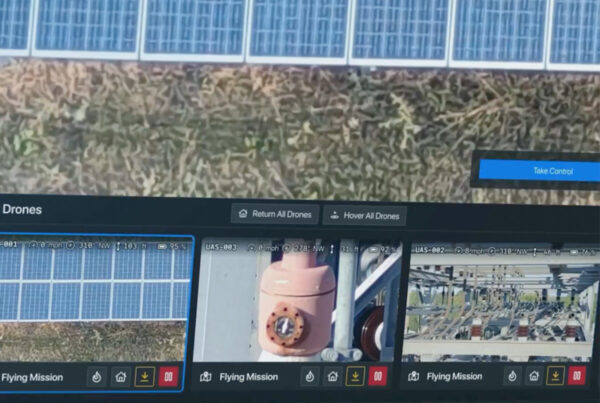
Increasing use of distributed energy resources drives development of real-time system loss analysis.
Whether a utility generates its own power or buys power on the wholesale market, one certainty is the amount of electricity the utility puts into the system never matches the amount recorded at the customer meter. The difference is referred to as system loss and may reach as high as 7% to 8% in some voltage categories.
A regulated utility recovers the cost of system losses through rate mechanisms partially supported by the utility’s system loss analysis (SLA). Traditionally, SLA requires a long and arduous engineering study that can take more than a year. It typically involves manually collecting transmission, sub-transmission and distribution data — starting from the generators and substations — and then trying to compare the data with samplings of customer classes based on approximate load shapes and profiles. Highly labor intensive and, at best, dependent on statistical methods, the exercise requires manually compiling data commonly used for other purposes, archived in historical databasesand not readily accessible.
To make the process a bit more workable, Ameren engineers typically narrow the analysis to coincident peak-load periods. The analysis performed is a rigorous statistical exercise, but the results have limited applicability because of the quality of data available, use of sampling and assumptions about the hours of the year to analyze. Furthermore, given the time it takes to complete, a traditional SLA model can be obsolete almost as soon as it is defined. Ameren knew it needed a more efficient and accurate way to perform SLA.
The path to obsolescence
With all the time and cost involved, it is little wonder why Ameren and other utilities only perform SLA once every three to five years, and sometimes even longer. Ameren Illinois, for example, had not updated its SLA in more than 10 years. This was acceptable in a world where the grid profile basically stayed the same from year to year, as was the case up until the last five to 10 years. However, with the proliferation of distributed energy resources (DERs), a major shift in the workforce from factories to homes and other factors, the grid profile can change significantly from year to year.
A three-year-old model (much less a 10-year-old model) can quickly become obsolete. Additionally, it is conceivable, and likely, SLA could play a key role in DER valuation and siting as well as in the creation of better models for retail locational pricing. With this in mind, Ameren Illinois decided to propose an innovative, more efficient and more accurate way to conduct SLA.
Ameren’s real-time losses team reviews losses data. Chance Alexander, associate engineer, explains how losses are depicted on graphs to Dominic Perniciaro, riders and margin manager, and Keith Hock, director of technical services and operations planning
With more than 3 million customers, Ameren is a tier-one utility, operating businesses in rate-regulated electric generation, transmission and distribution as well as rate-regulated natural gas transmission and distribution. In the second quarter of 2016, Ameren Illinois set an internal goal to update its SLA study to more accurately reflect losses by voltage level. A typical timeline for performing this type of study can be more than a year, with a cost of several hundred thousand dollars and upward. Ameren Illinois’ goal was to complete the updated SLA by the end of that year.
The engineering group predicted the study would take 12 to 18 months, consistent with previous studies. As is often the case, the engineering resources were disposed on other high-value projects with regulatory deadlines and firm in-service dates. Ameren’s transmission technical services and operations planning group, together with the regulatory group, agreed they needed to come up with a better idea.
Right idea, right technology
In 2013, Ameren initiated a system-wide advanced metering infrastructure (AMI) deployment in Illinois, scheduled to be complete by the end of 2019. In advance of full deployment, Ameren began to evaluate operational use cases for the big data about to emerge from AMI. Aggregating this data by operational and commercial attributes was the first step in extracting grid operations and financial benefits from AMI, coupled with other system data. SLA was an identified use case but was not high on the list until the Ameren Illinois end-of-2016 deadline moved up its priority. Fortunately, the utility was prepared to leverage the AMI data.
With AMI, Ameren can collect hourly data for essentially every service point. It knows, by rate class, the voltage level of each service point and, from system connectivity models, it can determine from which part of the system each customer is served. If Ameren could calculate its total system losses hour by hour, it should be able to calculate hourly system losses on every part of the grid — from transmission lines to distribution lines to end customers.
In the optimal case, Ameren could do this using real-time data and mathematical formulas rather than taking peak-load snapshots and extrapolating estimates based on statistical formulas. However, this was easier said than done. Much of the necessary data was still buried in disparate historical databases not designed for this kind of analysis and required a lot of heavy lifting in addition to restaging to make the necessary calculations. The key would be finding a way to automatically analyze and dynamically model the data from AMI as well as from every physical transmission and distribution asset over any given time period.
As part of an ongoing effort to improve its financial analysis, Ameren wanted the ability to do a detailed profit and loss statement on every individual customer service point. In addition to the financial data, the utility wanted a deep dive into individual service point attributes, including voltage class, rate class and ZIP code. It also wanted to include spatial and temporal data from all its physical grid assets. All these data points were more than the utility needed for its immediate purposes, but with an eye toward the future, Ameren knew this information would be valuable for reporting and analytics.














